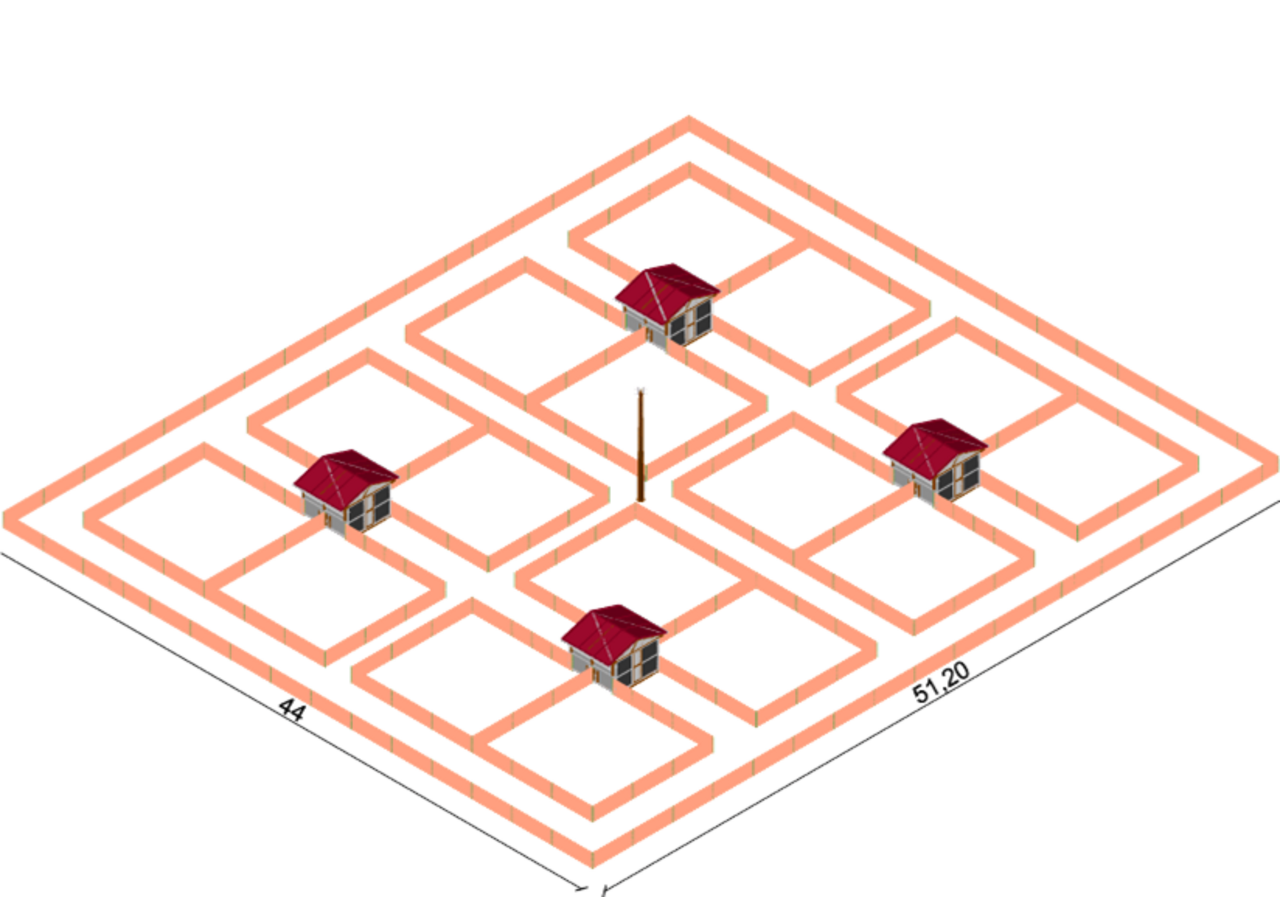Project
Mobile Chicken Research Center

Mobile Chicken Research Center
At the Thünen Institute of Organic Farming, a housing system has been especially designed and built for experiments focusing on chicken feeding and chicken genotypes for use in organic agriculture.
Background and Objective
On producing farms, chicken are usually kept in large herds of 100s and 1,000s of animals. In research, numerous small herds are more advantageous, enabling more precise data collection. On the one hand, small groups simplify control of the animals. On the other hand, variables like feed intake and laying performance can only be documented for the whole group, therefore several groups per treatment are needed in order to yield reliable results. For experiments under the conditions of organic agriculture, an added challenge is the provision of outdoor runs for all groups of chicken.
Our aim was therefore the design and building of a housing system for experiments comparing different types of feeding and genotypes under the conditions of organic agriculture.
Approach
During winter 2015/2016, preparations and planning began, and in spring 2016, the technical division of the Thünen Institute of Organic Farming in Trenthorst realised plans by Ralf Bussemas and started work on the first units of the so called Mobile Chicken Research Center, short: MHFZ. Apart from the above mentioned requirements of housing numerous small groups and providing outdoor runs for all of them, the MBRC should also be easy to move and clean.
Results
In its finished version, the MHFZ now consists of eight units, with each unit housing 4 groups of 20 broilers each, or 2 groups of 20 laying hens each. Each group is fed separately, and has access to its own outdoor run. for the protection of the animals against predators and to avoid mixing of the different groups, the outdoor runs are tightly fenced and the covered with nets. When an experiment is finished, the MHFZ is moved, partly disassembled , cleaned and then again assembled at a new location. By doing so, hygienic problems and carry-over effects from one experiment to the next can be avoided, and we can offer fresh, green outdoor runs to each generation of chicken.
The MHFZ in its first version of only two units was used in the project "Fattening trial feed structure", which examined the effect of milled versus pelleted feed with or without additionally offering germinated wheat to broiler chicken.
From 2017-2019, the MHFZ with then four units was used for both the broiler trials as well as the laying hen trials of the BÖLN-project "Treated common vetch seeds monogastrics". In order to house laying hens, adaptations to the MHFZ were necessary.
Starting at the end of 2020, the finished version of the MHFZ with eight units will house the dual-purpose chicken of the EU project PPIOLW, first the cockerels and then the laying hens.
Links and Downloads
www.thuenen.de/de/ol/projekte/systeme-der-gefluegelhaltung/huehnermast-futterstruktur/
Thünen-Contact

Involved Thünen-Partners
Duration
1.2016 - 12.2023
More Information
Project status:
finished

![[Translate to English:] [Translate to English:]](/media/_processed_/8/e/csm_Bildschirmfoto_2021-03-03_bearb_fc48ac88bf.jpeg)
![[Translate to English:] [Translate to English:]](/media/_processed_/8/e/csm_Bildschirmfoto_2021-03-03_bearb_ba3ec0e9d7.jpeg)





